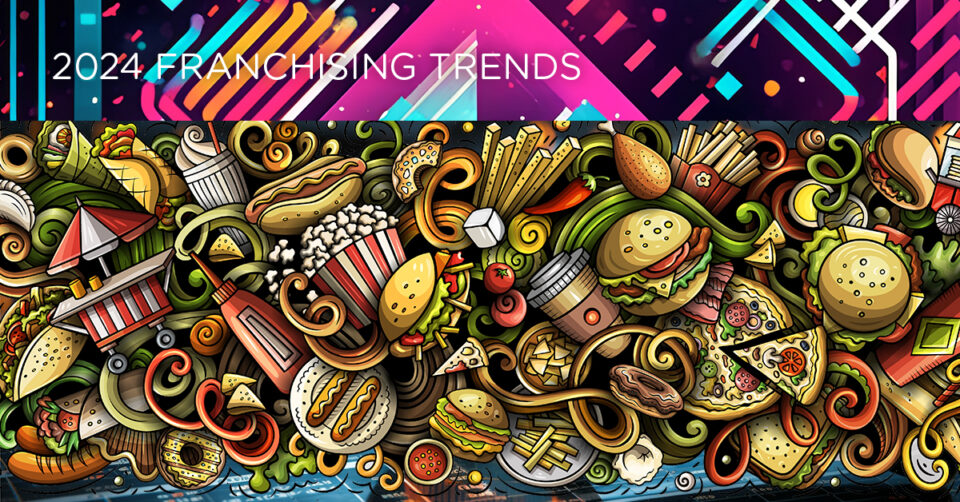By Anna Racovali and Eva Hongya-He, Environics Analytics
Despite economic concerns in the aftermath of the pandemic and inflation slowing down some sectors, certain industries, specifically quick service restaurants (QSRs), are witnessing strong recovery and growth. Statista reported an all-time high market size ($33.6 billion USD) of the Canadian quick service restaurant sector in 2022, a whopping 22 per cent growth compared to the previous year. How have things been looking in 2023, and more importantly, how can the QSR industry cater to the emerging needs of Canadians?
In the 12 months leading up to November 2023, the QSR industry continued its robust growth, attracting 825 million visits from Canadians, a 28 per cent increase from the previous period. Similar to 2022, there was a high visit volume in spring and early summer from March to May 2023. When comparing year over year, the summer months saw significant growth compared to 2022, with August 2023 experiencing a 52 per cent YOY increase from August 2022, and September 2023 with a 47 per cent YOY increase.

To understand more nuances across different audiences in the Canadian market, let’s look under the hood and see how different demographics navigate their experiences with fast food. Around 65 per cent of Canadians tend to visit QSR at high rates, and these fast-food lovers include four distinct audience groups: diverse families, young singles and families, affluent families, and older families/empty nests.
Diverse families, a larger group accounting for 24 per cent of the Canadian market, encompass large young to middle-aged families earning average incomes. This group is highly diverse, with 60 per cent of them belonging to a visible minority group, the majority of which are immigrants to Canada, and they often speak non-official languages at home. They are happy to splurge on food, spending 33 per cent of their food allowance on food purchased from restaurants. Busy with their jobs across all sectors to support their larger families, they often patronize QSRs on a regular basis. This group is a big fan of all QSR formats, including eat-in, delivery, drive-thru, takeout, etc. Very open-minded when it comes to food, they tend to dine from all cuisines, with Indian, steak, and bistro-style food being their favourites, among others.
Young singles and families, representing eight per cent of the Canadian population, tend to be younger residents working either white-collar or service jobs in the urban areas. They tend to earn below-average incomes and spend lower amounts (about $12,000) on food annually, 35 per cent of which is allocated to food from restaurants, especially snacks and beverages. These young urbanites tend to rent in dense apartment buildings and enjoy the proximity and convenience of QSR restaurants around them. Many are rooted in city life, taking transit, or walking to places, and enjoying a quick delivery or takeout meal. Busy with their career and social life, they often feel stressed about not having enough time and take a break from cooking by ordering a meal. Burgers, donuts, coffee, and tacos are popular for this young audience. This group has an average minority presence of 24 per cent; however, they’re eager to learn from other cultures and lifestyles and might appreciate diverse representation in the QSR industry.
Affluent families are the wealthiest audience and account for 20 per cent of the Canadian market. They are home to large middle-aged families with teenagers or adult children living at home. Breadwinners in these households tend to earn 43 per cent more than the average Canadian household income and drive to their white-collar jobs in management, business, and science. Their deep pockets allow them to splurge across all categories including food, spending more than $6,000 on food from restaurants each year. They are overall health conscious and strive for a more wholesome lifestyle and diet, but occasionally enjoy the pleasure fast food can offer. They might prefer QSR chains that appeal to their effort toward health. This group is more likely to opt for drive-thru and delivery services when it comes to food; burgers, donuts and coffee, and Italian cuisine are more popular for them.
Older families and empty nests, representing 19 per cent of the population, are comprised of mature residents earning lower incomes. These blue-collar workers bring home below-average incomes ($102,000 per household) compared to the national average and likely keep their food budget down by minimizing the share of their wallet allocated to food from restaurants, spending nine per cent less on food from restaurants compared to the average Canadian. They tend to be concerned about their financial future as many of them live on fixed incomes, and likely choose a restaurant based on the price and value it offers. Drive-thru QSR restaurants tend to be more popular with this group, and they are less likely to use delivery service, likely due to the additional cost incurred. Calorie-rich food such as donuts and coffee, burgers, and pizza are among this group’s favourites.
Canadians have become more strategic in where they purchase food due to rising inflation and the reduction of discretionary income, causing financial vulnerability to become a key driver in where customers choose to shop. Understanding the food preferences and values of Canadians is essential for the QSR industry to continue growing through 2024 and beyond.
Source: Environics Analytics, Statista – Market size of the quick service restaurant sector in Canada from 2012 to 2022
Read more about quick service restaurant franchises:
- 🍕 QSR brands serving up global flavours offer a buffet of options for prospective franchisees
- 🧃 QSRs make it easier than ever to get your favourite burger and fries, salad and smoothie, coffee and donut, and so much more efficiently delivered into your hands
- 🌯 How first-year success led to the expansion of three restaurants for Quesada franchisee Daksh Patel

